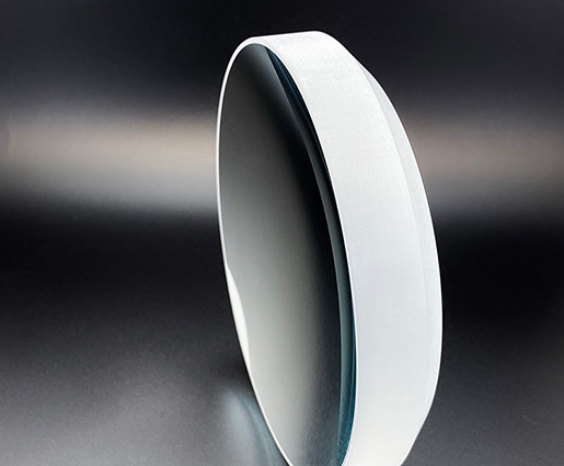Plano-Concave Lenses: Versatile Tools in Optics
Oct. 20, 2023
Plano-concave lenses are optical elements that find applications in various fields due to their unique design and optical properties. These lenses, which have one flat (plano) surface and one concave surface, are known for their ability to diverge light and are used in a multitude of applications across different industries. In this article, we will explore the many uses and functions of plano-concave lenses.
Understanding Plano-Concave Lenses
Before delving into their applications, it's important to grasp the key characteristics of plano-concave lenses:
Divergent Lens
The defining feature of plano-concave lenses is their ability to diverge light. When parallel rays of light pass through the flat side (plano side) of the lens, they spread out and diverge as they exit from the concave side. This is in contrast to plano-convex lenses, which converge light to a focal point.
Negative Focal Length
Plano-concave lenses have a negative focal length. This means that they do not focus light to a single point; instead, they create virtual, diverging rays that appear to emanate from a specific point behind the lens. The focal length of a plano-concave lens depends on its curvature and refractive index.
Thin Center, Thick Edges
Plano-concave lenses are thickest at the center and taper toward the edges. This thin center and thick edges are crucial for their divergent properties. Light rays that pass through the lens refract more at the edges, causing them to spread out.
Versatile Material Choices
Plano-concave lenses can be made from a variety of optical materials, including glass, fused silica, and plastic. The choice of material depends on the specific application, considering factors like optical properties and durability.
Applications of Plano-Concave Lenses
Plano-concave lenses are utilized in a wide array of applications across different industries. Their ability to diverge light makes them indispensable for specific optical functions. Here are some of the primary uses of plano-concave lenses:
Beam Expansion
One of the most common applications of plano-concave lenses is beam expansion. They are used to increase the diameter of a laser beam or any other collimated light source. By allowing the beam to diverge, the lens enlarges its cross-section. This is particularly useful in laser systems, laser processing, and various optical instruments where a larger beam is required.
Collimation
Plano-concave lenses are also employed for collimation purposes. When positioned at the appropriate distance from a point source of light, they transform the divergent light into a collimated, parallel beam. This is essential in applications such as laser diode modules, laser pointers, and laser communication systems, where precise and parallel beams are necessary.
Focusing
In applications where focusing light to a point is required, plano-concave lenses are used with the concave side facing the light source. They diverge the light, and when directed through the lens, the rays converge to a focal point. This is crucial in optical systems such as laser engraving, laser cutting, microscopy, and laser-based materials processing.
Astigmatism Correction
Plano-concave lenses are valuable for astigmatism correction. Astigmatism is an optical aberration that causes light rays to focus at different planes, resulting in blurred or distorted images. By introducing controlled astigmatism using plano-concave lenses, these aberrations can be corrected in optical systems, leading to improved image quality.
Divergence Control
Plano-concave lenses are used in applications where controlled divergence of light is required. For example, in laser systems where beam shaping or beam homogenization is necessary, these lenses play a critical role in controlling the beam's characteristics.
Optical Systems
Plano-concave lenses are integrated into various optical systems, including telescopes, microscopes, and cameras, to perform specific optical functions. For example, in telescopes, they may be used as field lenses to provide a wide field of view.
Corrective Vision
In some cases, plano-concave lenses are employed in ophthalmic lenses for corrective vision, particularly for individuals with specific vision impairments. These lenses help correct issues such as myopia (nearsightedness) by diverging light before it enters the eye.
Benefits of Plano-Concave Lenses
The use of plano-concave lenses in these diverse applications offers several advantages:
Precision Control
Plano-concave lenses provide precision control over the divergence, collimation, and focusing of light. This level of control is essential in many optical systems and applications.
Versatility
These lenses are versatile and can be used with various light sources, including lasers, LEDs, and natural light. Their applications span multiple industries, including research, medicine, industry, and consumer products.
Improved Image Quality
In applications where astigmatism correction is required, plano-concave lenses can significantly enhance image quality by reducing optical aberrations.
Beam Shaping
Plano-concave lenses are effective tools for shaping and controlling the characteristics of laser beams. They are integral in beam homogenization and beam expansion techniques, which are vital for specific laser applications.
Conclusion
Plano-concave lenses are versatile optical components that serve various functions across different industries. Their unique ability to diverge light makes them indispensable for beam expansion, collimation, focusing, and astigmatism correction in optical systems and instruments. These lenses play a crucial role in shaping and controlling light, contributing to advancements in fields as diverse as laser technology, microscopy, astronomy, and medical optics.






















